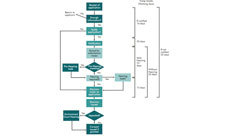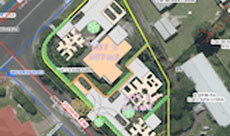New National Planning Standards

New National Planning Standards have been released. They will come into force on 3 May 2019.
Released by Environment Minister David Parker, the standards have been introduced to improve the consistency of council plans and policy standards.
Mr Parker says the release means plans will be easier to prepare, use and understand under the Resource Management Act 1991.
“The new Standards do not determine local policy matters or the substantive content of plans, which remain the responsibility of local councils and communities.”
He says that while there will be some up-front cost to councils the first time they update their plans to meet the Standards, this will be vastly exceeded by the savings to those who use them, including councils.
The Ministry for the Environment held nationwide meetings and received 201 submissions on the draft Standards from the public, councils, resource management professionals and iwi last year.
Since then changes have been made to increase clarity and make the Standards more adaptable to local contexts.
For Waikato Regional Council RMA plans, they are aiming to migrate the operative regional coastal plan and regional plan into the new National Planning Standards in 2019/20, and migrate the Regional Policy Statement by 2022. They will make these updates using thier new on-line eplan which will replace the existing on-line plans.
Purpose of the national planning standards
The purpose of the national planning standards (planning standards) is to improve consistency in plan and policy statement structure, format and content.
The planning standards were introduced as part of the 2017 amendments to the Resource Management Act 1991 (RMA).
Their development is enabled by sections 58B–58J of the RMA.
They support implementation of other national direction such as national policy statements and help people to comply with the procedural principles of the RMA.
They are issued by the Minister for the Environment. To the extent that a matter relates to the coastal marine area, the Minister of Conservation approves a planning standard.
Why they are needed
Currently, plans and policy statements prepared under the RMA are inconsistent with each other and slow and costly to prepare. They can be hard to understand, compare and comply with. This is because councils have generally developed their plans and policy statements independently of each other and without a common structure and format as a reference point.
The wide variation in the structure and format of plans has also meant that other national direction such as national policy statements are often interpreted and implemented in different ways, reducing the effectiveness of these instruments.
The Rules Reduction Taskforce found that plans and policy statements are complex to the extent that people at all levels need specialist knowledge and experience to understand their provisions. For more information see the taskforce’s report:
The planning planning standards are an opportunity to standardise the basic elements of RMA plans and policy statements. They enable councils and plan users to focus their resources on the matters that directly influence resource management outcomes.
Scope and contents of planning standards
Under section 58C of the RMA, planning standards can specify different elements of plans and policy statements including:
- objectives
- policies
- methods (including rules)
- other provisions
- structure and form
- requirements that relate to electronic accessibility and functionality.
They can also be applied generally, to specific regions or districts or to other parts of New Zealand. The RMA specifies default timeframes for the implementation of ‘mandatory’ directions (which do not follow an RMA Schedule One process) though alternative timeframes can also be set in the planning standards. Timeframes for ‘discretionary’ directions can be specified in the planning standard and must be applied to the local context using an RMA Schedule One process.
What implementation timeframes apply to the first set of planning standards?
The Implementation Standard specifies the timeframes that apply to the first set of planning standards. Different timeframes apply to different planning standards and different local authorities.
- all councils must meet basic electronic accessibility and functionality requirements within one year from when the planning standards come into effect.
- regional councils have three years to adopt the standards for their regional policy statements, and ten years for their regional plans
- unitary councils have 10 years to adopt the planning standards
- city/district councils generally have five years to adopt the planning standards, with seven years for the definitions standard. A smaller group (list 1) who have recently completed a plan review have seven years to make changes, and nine years for definitions.
If a council undertakes a full plan review within these timeframes the new plan must meet the planning standards when it is notified for submissions.
There are also different timeframes for online interactive plans. Local authorities generally have five years, though some have seven years (list 2), regional councils and unitary councils, and city/district councils with under 15,000 ratepayers (list 3) have 10 years to comply with the requirements.
Process for making plans compliant
The majority of the standards are made up of ‘Mandatory directions’ this means that local authorities must amend their policy statements and plans to be consistent with the requirements of the planning standards without going through a normal RMA Schedule 1 process (notification, submission and hearings etc).
Local authorities may also make consequential amendments, required as a result of implementing the standards, without an RMA Schedule 1 process. Consequential amendments (under RMA section 58I(3)(d)) are additional amendments that are required to remove duplication, or conflict in policy statements/plans. Where the proposed changes go beyond consequential amendments a RMA Schedule 1 process must be used. We intend to provide guidance on what can be considered a consequential change.
The amendments required to implement mandatory directions in a planning standard must be publically notified once they have been made to inform the public that this has been completed.
There is only one standard that includes ‘Discretionary directions’. This is the Zone Framework Standard.


















